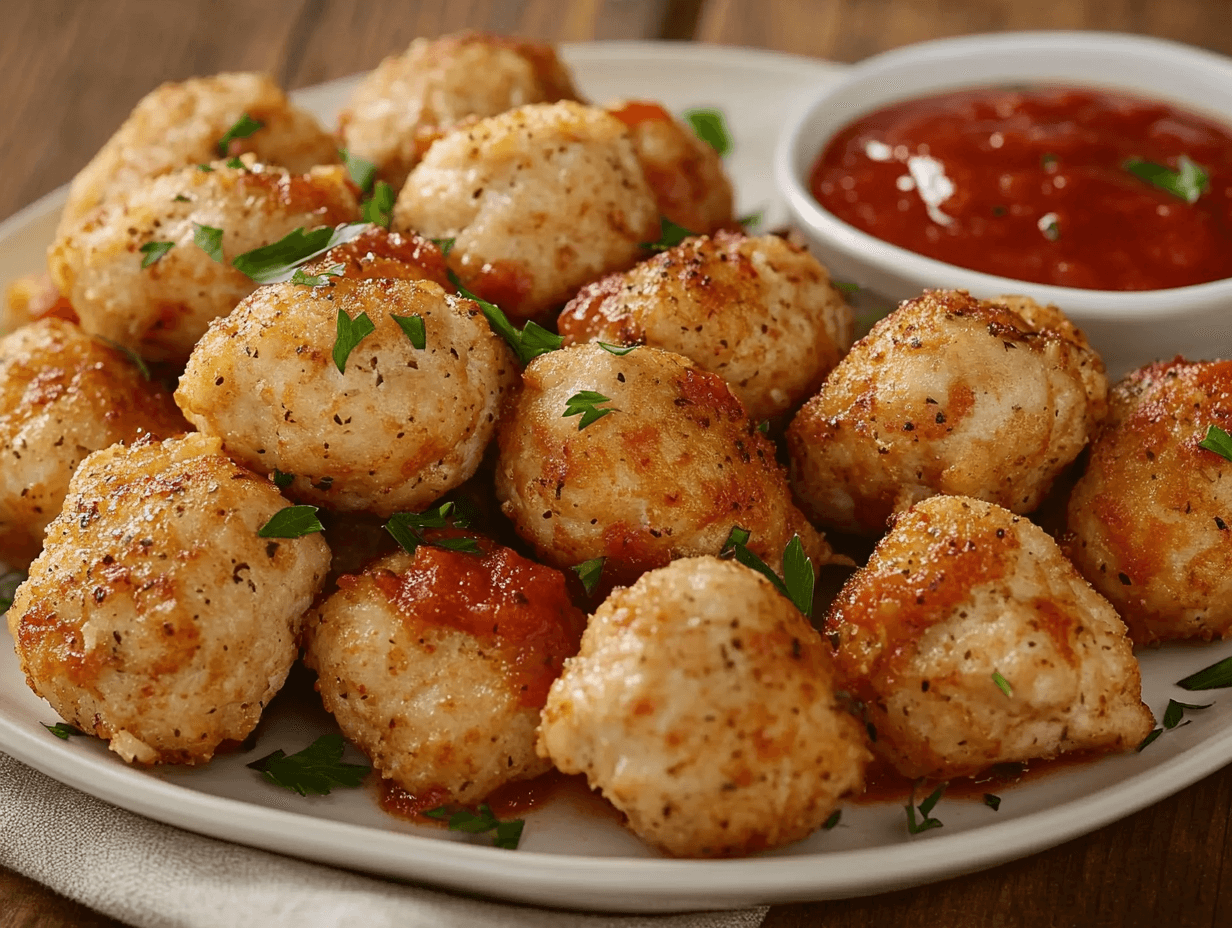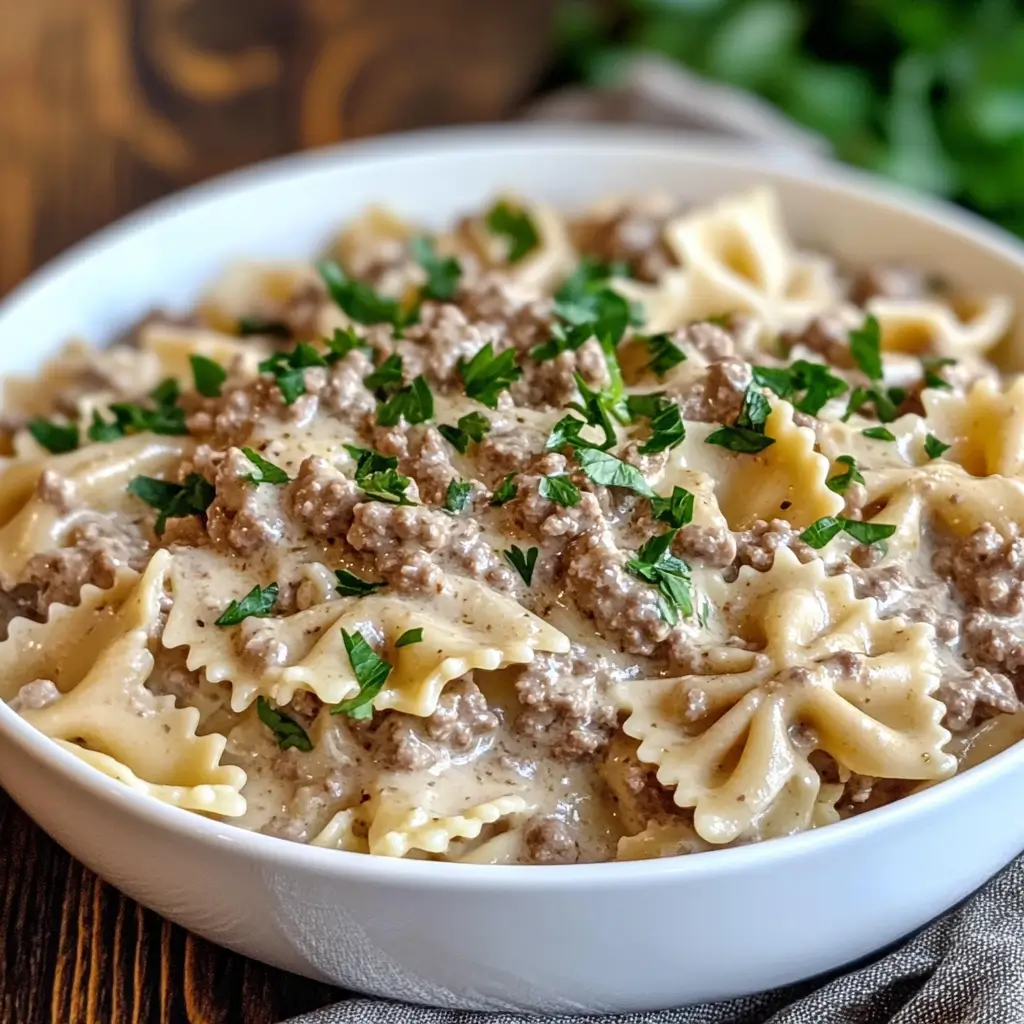Table of contents
Chicken meatballs are a versatile and delicious dish, perfect for family dinners, appetizers, or meal prep. However, many home cooks face a common problem and find themselves asking, “Why are my chicken meatballs tough?” Tough, dry, or rubbery meatballs can be disappointing, especially when you’ve put effort into creating a flavorful dish.
The good news is that tough chicken meatballs are entirely avoidable! With the right ingredients, techniques, and a little know-how, you can achieve tender, juicy meatballs every time. In this article, we’ll uncover the reasons behind tough meatballs and provide you with practical tips to fix and prevent them.
Outline Recap: The article will explore:
- The causes behind tough chicken meatballs.
- Tips and tricks for achieving the perfect texture.
- Common mistakes to avoid.
- Answers to frequently asked questions for confident cooking.
Understanding the Problem
Characteristics of Tough Meatballs
Tough chicken meatballs are easy to identify. They may feel rubbery, dense, or overly chewy when bitten into. Instead of being light and tender, they lack the satisfying juiciness and soft texture you’d expect from well-made meatballs. This issue often discourages home cooks from using chicken as their protein of choice, but it is entirely avoidable with the right approach.
Difference Between Tender and Tough Meatballs
The difference between tender and tough meatballs lies in their texture and moisture content:
- Tender Meatballs: Soft, juicy, and evenly cooked. They hold their shape without being dense.
- Tough Meatballs: Dry, overly firm, and difficult to chew. They may fall apart or feel compacted.
To achieve tender meatballs, it’s essential to understand what causes toughness and how to prevent it.
Causes of Tough Chicken Meatballs

Overmixing the Meat Mixture
Overmixing is one of the most common mistakes when making meatballs. While it’s essential to combine the ingredients thoroughly, excessive mixing can overwork the proteins in the chicken, leading to a dense and tough texture.
Tip: Mix the ingredients until just combined, ensuring even distribution without overhandling the mixture.
Using Lean Chicken Without Fat
Chicken is naturally leaner than beef or pork, and this lack of fat can make the meatballs less juicy. Ground chicken breast, in particular, has very little fat content, which results in drier meatballs.
Tip: Opt for ground chicken that includes both white and dark meat, or add a source of fat like olive oil, butter, or cheese to the mixture.
Overcooking the Meatballs
Chicken meatballs can become tough if overcooked. Unlike fattier meats, chicken has a narrow window of doneness, and cooking it too long can cause it to dry out.
Tip: Use a meat thermometer to ensure the internal temperature reaches 165°F (74°C) and remove them from heat immediately.
Lack of Moisture or Binding Agents
Without adequate moisture, chicken meatballs can feel dry and crumbly. Ingredients like breadcrumbs, eggs, or milk act as binders and help retain moisture during cooking.
Tip: Incorporate moist ingredients such as soaked breadcrumbs (panko), grated vegetables, or a splash of milk.
Improper Cooking Techniques
Cooking chicken meatballs at too high a temperature or directly in dry heat can cause the exterior to cook too quickly, leaving the inside undercooked or overcooked.
Tip: Use gentle cooking methods like simmering in sauce or baking at moderate temperatures to ensure even cooking.
How to Make Tender Chicken Meatballs
Achieving perfectly tender chicken meatballs requires a combination of the right ingredients, proper mixing, and thoughtful cooking techniques. Below are detailed steps and tips to ensure your meatballs come out soft, juicy, and full of flavor.
Choosing the Right Ingredients
- Ground Chicken with Fat:
To prevent dryness, choose ground chicken that includes both white and dark meat. Alternatively, mix in a small amount of another protein, like pork or beef, for added fat and flavor. - Binding Agents:
Ingredients like eggs, breadcrumbs, and milk are essential for maintaining structure and retaining moisture. These create a softer texture and prevent the meatballs from falling apart. - Flavor Boosters:
Herbs, spices, grated Parmesan, or minced garlic can enhance the taste while contributing to a well-balanced mixture. - Moisture-Rich Additions:
Adding grated vegetables like zucchini, onions, or carrots can introduce natural moisture into the meatballs, keeping them tender and juicy.
Proper Mixing Technique
Overmixing the meat mixture is a common pitfall that can lead to tough meatballs. Here’s how to avoid it:
- Step 1: Place all your ingredients in a large mixing bowl. Start with the dry ingredients like breadcrumbs and seasonings, followed by the wet ingredients like eggs and milk.
- Step 2: Gently mix with your hands or a spoon until the ingredients are evenly distributed. Avoid squeezing or compacting the mixture.
- Step 3: Once combined, stop mixing. The less you handle the mixture, the more tender your meatballs will be.
Using the Right Cooking Method
- Baking:
Baking meatballs in the oven allows for even cooking without the need for excess oil. Preheat your oven to 375°F (190°C) and bake the meatballs on a lined baking sheet for 15–20 minutes. - Simmering in Sauce:
For extra tenderness, cook the meatballs directly in a sauce like marinara. The sauce adds flavor and prevents the meatballs from drying out. - Pan-Frying:
If you prefer a crispier exterior, lightly pan-fry the meatballs in oil before transferring them to a sauce or oven to finish cooking.
Adding Moisture and Flavor
To lock in moisture:
- Breadcrumb Mixture: Soak breadcrumbs in milk or broth before adding them to the meat mixture.
- Cheese: Mix shredded mozzarella or ricotta into the meat for a creamy texture.
- Seasoning: Season the meat generously with salt, pepper, and other spices to enhance flavor throughout.
Testing Doneness
Cooking chicken to the correct temperature is critical for tenderness:
- Use a meat thermometer to check that the internal temperature reaches 165°F (74°C).
- Cut open a test meatball to ensure it’s fully cooked but still juicy. The center should be moist and white, with no traces of pink.
Common Errors in Preparation
- Skipping Fat:
Relying solely on lean chicken results in dry, tough meatballs. The absence of added fat diminishes their tenderness.Solution: Use a mix of white and dark chicken meat or incorporate fatty elements like olive oil, cheese, or ground pork. - Insufficient Use of Binding Agents:
Failing to include enough binding ingredients, such as eggs and breadcrumbs, can lead to crumbly or overly dense meatballs.Solution: Ensure the mixture includes at least one egg and breadcrumbs in adequate quantities to maintain the proper structure. - Lack of Proper Seasoning:
Chicken’s mild flavor requires bold seasoning to make the meatballs flavorful and aromatic. Skipping this step can result in bland results.Solution: Season generously with garlic, herbs, Parmesan cheese, or spices for a rich, balanced taste.
Mistakes During Cooking
- Overmixing the Mixture:
Overworking the meat mixture activates the proteins, leading to dense and rubbery meatballs.Solution: Mix ingredients gently until just combined. Use your hands for better control. - Overcooking the Meatballs:
Chicken dries out quickly when overcooked, resulting in tough, chewy meatballs.Solution: Monitor cooking time closely and use a thermometer to ensure the meatballs reach 165°F (74°C) but no higher. - Cooking at Too High a Temperature:
High heat can cause the outside to cook too quickly while leaving the inside undercooked.Solution: Opt for moderate heat whether baking, pan-frying, or simmering. For frying, maintain medium heat to cook evenly.
Mistakes in Storage and Reheating
- Improper Storage:
Storing cooked meatballs incorrectly can make them dry and lose flavor.Solution: Store leftover meatballs in an airtight container in the refrigerator. If possible, keep them in a sauce to retain moisture. - Dry Reheating Methods:
Reheating meatballs in the microwave or oven without any liquid can dry them out further.Solution: Reheat meatballs in a covered pan with a splash of broth or sauce to keep them moist.
Not Testing Before Cooking All Meatballs
It’s possible to make an entire batch of bland or overly dense meatballs if you skip testing the seasoning or consistency of the mixture.
Solution: Cook a small test meatball before preparing the whole batch. This allows you to adjust seasoning, moisture, or texture as needed.
Frequently Asked Questions
Why Are My Meatballs Dry and Crumbly?
Dry and crumbly meatballs typically result from a lack of moisture or binding agents in the mixture. If you skip ingredients like eggs, breadcrumbs, or milk, the meatballs will have difficulty holding together and may dry out.
Solution: Use binding agents to keep the meatballs cohesive and moist. Adding soaked breadcrumbs or grated vegetables can also improve texture.
Can I Fix Tough Meatballs?
While tough meatballs cannot be entirely transformed, you can salvage them by adding moisture. Simmering them in a flavorful sauce, such as marinara or cream-based sauce, helps reintroduce some juiciness.
Solution: Place the cooked meatballs in a pot with sauce and heat gently for 10–15 minutes. This will soften the exterior and enhance the flavor.
Is It Better to Bake or Fry Chicken Meatballs?
Both methods have their pros and cons. Baking is healthier and ensures even cooking, while frying creates a crispy exterior and adds extra flavor.
Solution: Choose based on your preference. For a balance of health and taste, lightly fry the meatballs to brown them, then finish cooking them in the oven or simmer them in sauce.
How Do I Know When Chicken Meatballs Are Done?

Chicken meatballs are done when they reach an internal temperature of 165°F (74°C). Visually, they should be firm to the touch and opaque in the center with no pink meat.
Solution: Use a meat thermometer for accuracy. Avoid cutting into too many meatballs, as this can release their juices and dry them out.
What Are Good Binding Agents for Chicken Meatballs?
Common binding agents include:
- Eggs: Essential for holding the mixture together.
- Breadcrumbs or panko: Add structure and absorb moisture.
- Mashed vegetables: Ingredients like mashed potatoes or grated zucchini work well as natural binders.
- Cheese: Adds both moisture and flavor.
Solution: Experiment with combinations of these ingredients to find the right texture for your meatballs.
Can I Make Chicken Meatballs Ahead of Time?
Yes, chicken meatballs are ideal for meal prepping. You can shape them in advance and store them in the refrigerator or freezer until you’re ready to cook.
Solution:
- Refrigerator: Store uncooked meatballs in an airtight container for up to 24 hours.
- Freezer: Freeze uncooked meatballs on a tray until firm, then transfer them to a freezer-safe bag. Cook directly from frozen or thaw overnight in the fridge before cooking.
Conclusion
Making tender and flavorful chicken meatballs is entirely achievable with the right techniques and ingredients. While challenges like toughness and dryness are common, they can be avoided by understanding the causes and implementing the tips shared in this guide.
Key takeaways include:
- Avoid overmixing the meat mixture to maintain a light and tender texture.
- Use moisture-rich ingredients like grated vegetables, cheese, or soaked breadcrumbs to enhance juiciness.
- Choose a cooking method that suits your preferences, whether baking, frying, or simmering in sauce.
- Always check for doneness with a thermometer to prevent overcooking.
With these strategies, you’ll be able to consistently make chicken meatballs that are moist, tender, and bursting with flavor. Whether served as a main dish, appetizer, or in soups and pasta, your homemade chicken meatballs will become a family favorite.
Closing Note
Cooking is a learning process, and even mistakes can lead to new discoveries. Keep experimenting with seasonings, ingredients, and techniques until you find your perfect recipe. Enjoy the journey to mastering this versatile dish!





